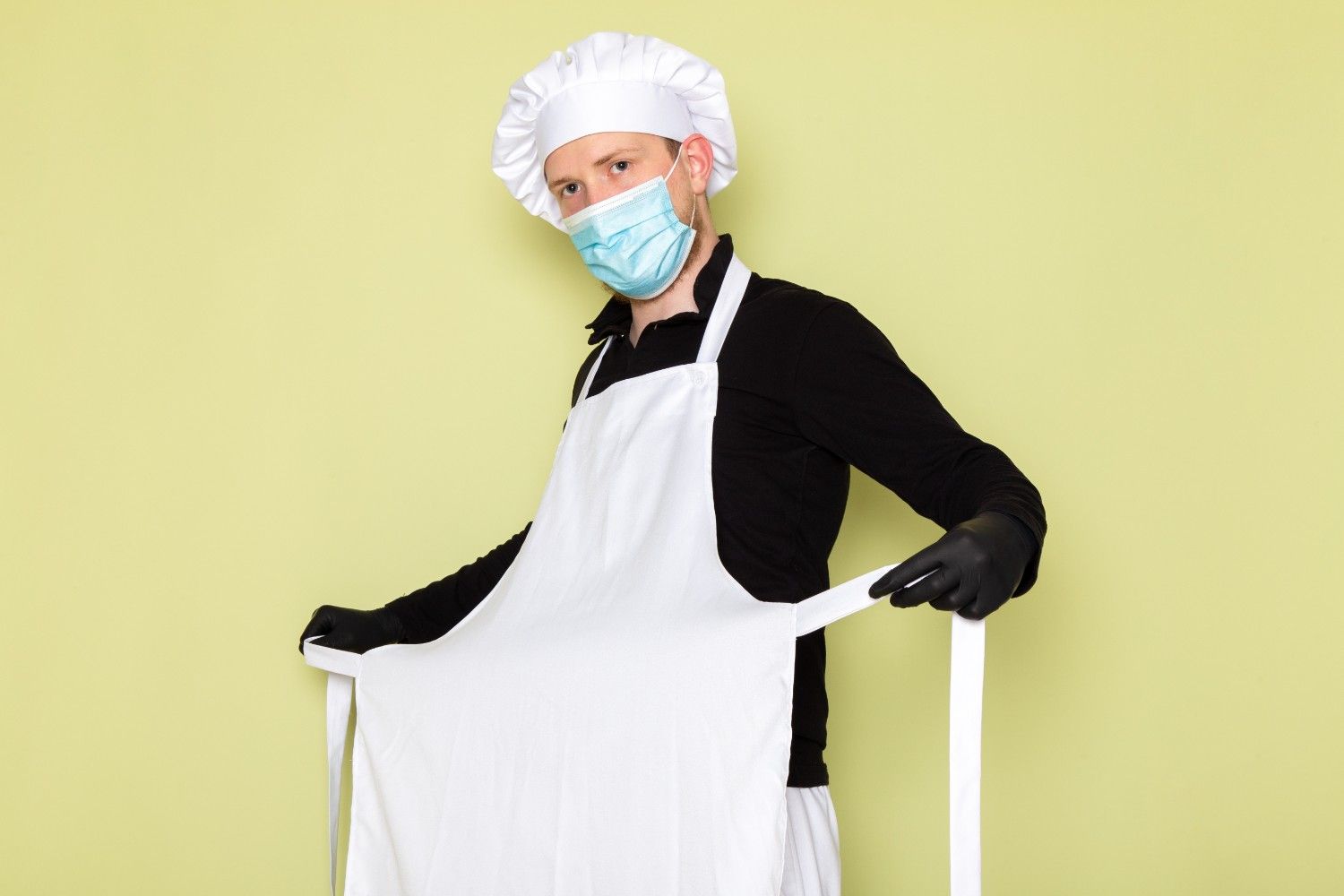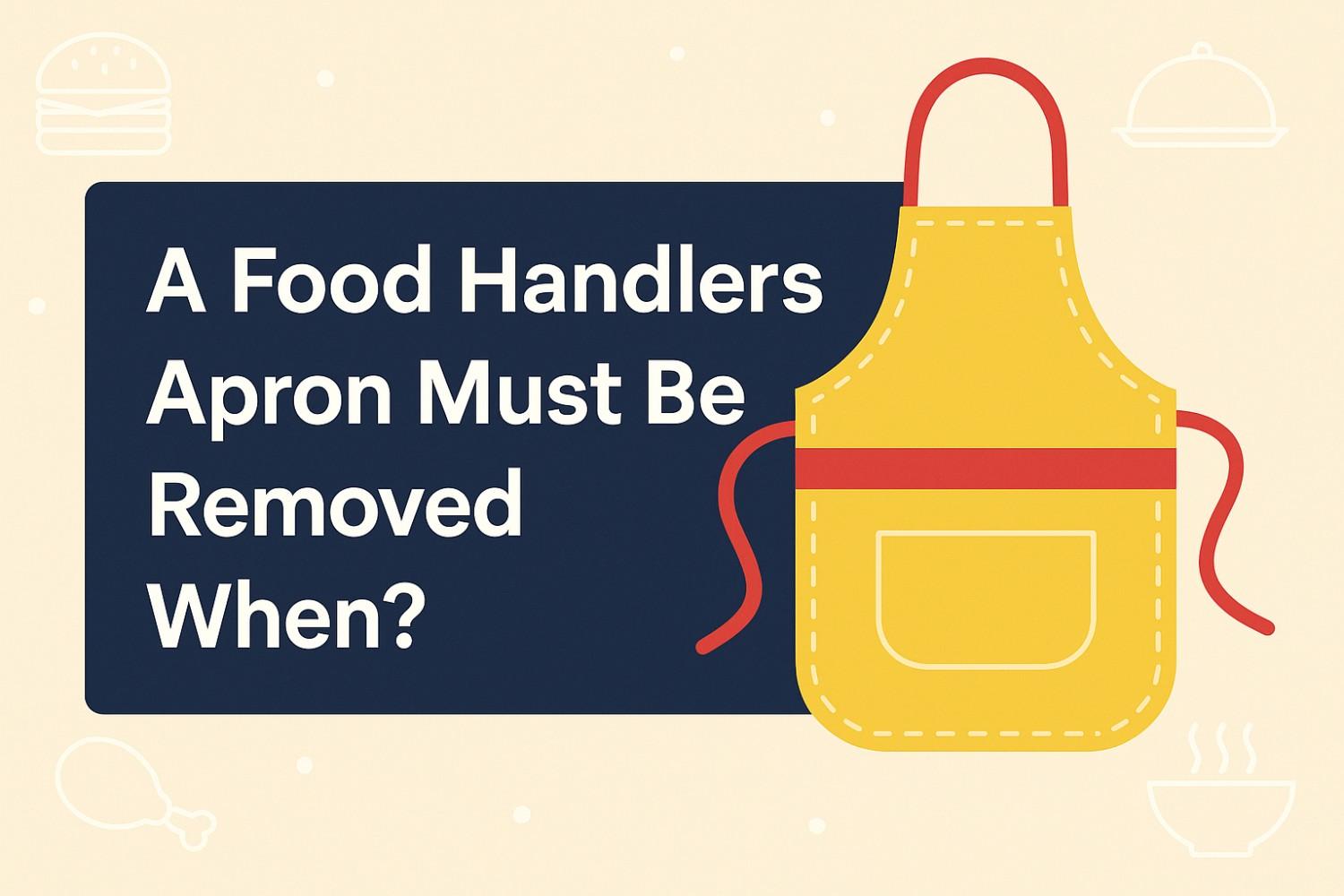I learned this lesson the messy way: during a busy Friday rush, I darted to the dumpster with a full trash bag, forgot to take off my apron, and came back smelling like last night’s onion peels. My manager pulled me aside and gave me the gentle-but-firm talk—a food handlers apron must be removed when you leave the prep area for things like the restroom or trash run.
It wasn’t just about the smell; it was about cross-contamination and compliance. Since then, I’ve treated my apron like a food-contact risk barrier, not a fashion statement.
What Does the Rule Actually Mean—and Why Does It Exist?
The core idea is simple: the apron protects food from your street clothes while you prep. The second you step out of food preparation areas—say, to take out garbage or use the restroom—you risk bringing bathroom or dumpster contaminants back into the kitchen if you keep the apron on. That’s why credible food safety training materials emphasize removing (and properly storing) aprons when leaving prep areas, especially for the restroom or trash.
It’s not just about leaving the line. Soiled aprons need replacing as soon as they’re contaminated (spills, raw meat juices, chemicals). Industry hygiene guidance also stresses changing dirty uniforms/aprons and storing dirty clothing away from prep zones.

When, Exactly, Should I Remove the Apron?
Think “leaving the line” and “visible contamination.”
- Leaving the prep area: Remove and store your apron before taking out trash or going to the restroom; wash hands before returning. Multiple ServSafe-aligned resources call this out explicitly.
- When it’s dirty or contaminated: If your apron is visibly soiled (splatters, raw protein drips) or picks up odors/chemicals, swap it for a clean one.
“A Food Handlers Apron Must Be Removed When…”—What Are the High-Risk Moments?
This is the wording you’ll often see on tests and flashcards, and the best-practice answer targets cross-contamination:
- Taking out the garbage: Remove the apron first, then wash hands before resuming prep.
- Using the restroom: Always take it off and store it properly; wash hands thoroughly after.
- Leaving the kitchen for non-food tasks: If you’re stepping into non-prep spaces, take it off to avoid bringing contaminants back in.
How Do I Handle, Store, and Replace Aprons the Right Way?
Treat your apron like any other linen or barrier that can carry pathogens if misused.
- Put it on clean at the start of the shift and change when soiled. Store dirty aprons away from food areas.
- Remove and store the apron in a designated spot whenever you leave prep areas; never hang it on equipment or food-contact surfaces.
- Never wipe hands on your apron—use paper towels and proper handwashing. This is a common ServSafe teaching point.

What’s the Connection to Food Codes and Compliance?
While the FDA Food Code focuses broadly on preventing contamination and maintaining hygienic practices, widely adopted training curricula operationalize those principles with specific apron rules—remove the apron when leaving prep areas and replace soiled aprons. Following these practices keeps you aligned with inspections that monitor good retail practices and risk-factor controls.
How Should I Build a Daily “Apron Routine” That Passes Audits?
Make it muscle memory:
- Start clean: Don a clean apron at your station.
- Spot check: If it’s soiled or smelly, replace it immediately.
- Leaving the line? Remove and store the apron before the restroom or trash; wash hands before returning.
- End of shift: Send dirty aprons to laundry; never stash them near food or food-contact surfaces.

Frequently Asked Questions
1. Do I have to remove my apron just to step into the walk-in?
If you’re still actively prepping and the walk-in is part of the prep flow (grabbing ingredients), most operations don’t require removing the apron for that quick step. The bright-line rule is leaving prep for restrooms, trash, or non-food tasks—apron off, then handwash before returning. Always follow your written SOPs and local inspector guidance.
2. If my apron gets a splash of raw chicken juice, can I sanitize it and keep going?
No. Replace it immediately. A contaminated apron can transfer pathogens to hands, equipment, and food. Industry guidance emphasizes changing soiled uniforms/aprons as needed and keeping dirty textiles away from prep.
3. Is it okay to wear my apron into the restroom if I don’t touch anything?
No. That’s precisely what the “remove before restroom” rule is designed to prevent. Remove and store it properly, use the restroom, wash hands thoroughly, and only then return to prep.
4. Where should I keep my dirty apron during service?
Use a designated storage or laundry bin away from food and prep areas. Don’t hang it on prep tables, equipment, or door handles. This prevents cross-contamination and keeps you aligned with inspection expectations.
Okay, So What’s the Bottom Line? (And a Quick Confidence Tip)
Here’s the crisp takeaway: a food handlers apron must be removed when you leave the prep area for the restroom, trash, or non-food tasks, and it must be changed the moment it’s soiled. Build a simple routine—clean on, remove for non-prep, replace when dirty, and wash hands religiously—and you’ll glide through service and inspections with far fewer headaches.




